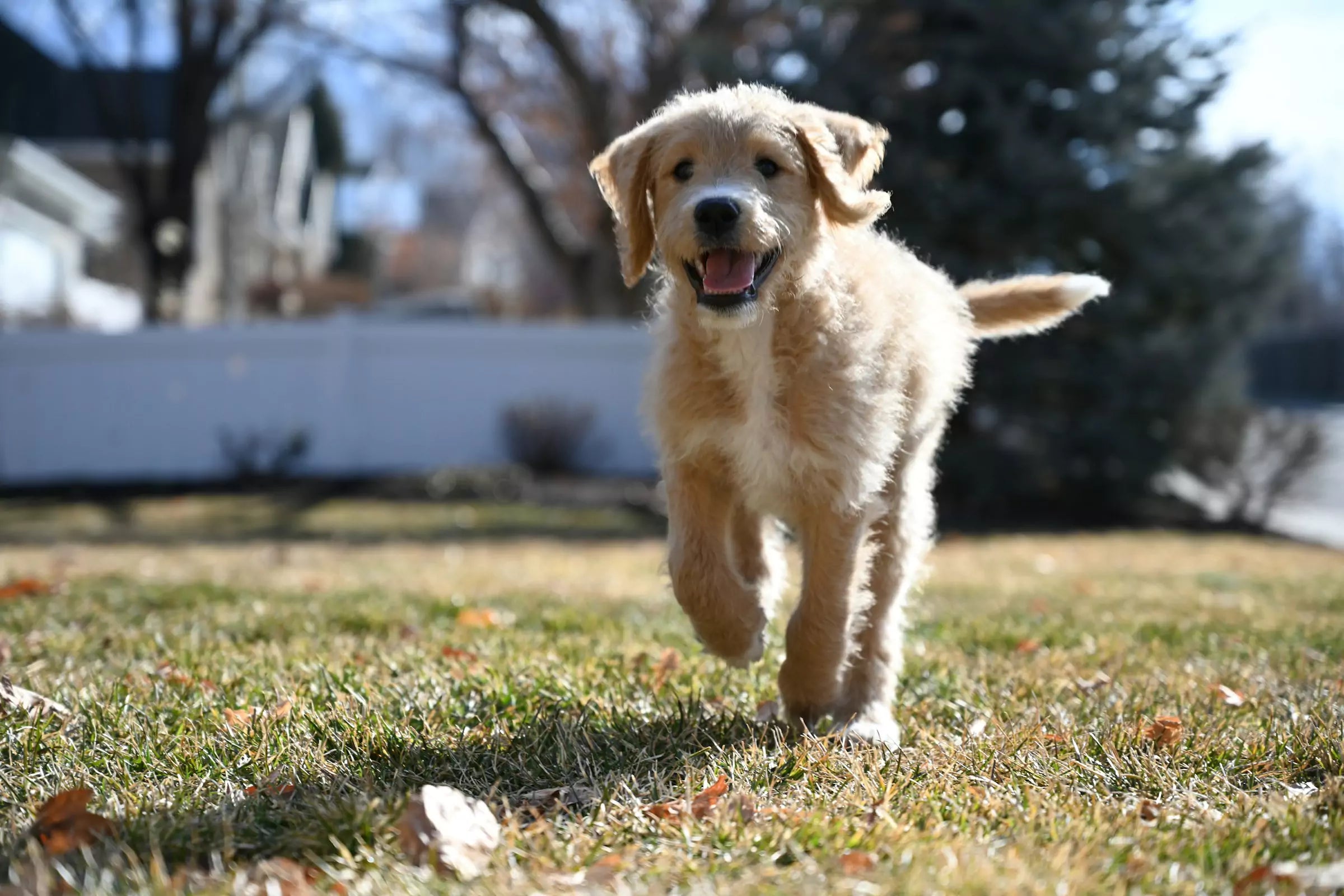Introduction
As a loving dog parent, you’ve probably noticed how much your dog enjoys running around, chasing balls, or going for long walks. But it’s not just about having fun—exercise is essential to their overall health and well-being. Just like us, dogs need to move their bodies to stay fit, happy, and mentally sharp. Regular physical activity can help your dog live a longer, more fulfilling life, reducing the risk of developing serious health problems.
1. Obesity and Weight Management

Obesity is one of the most common health issues in dogs, and it’s not something to take lightly. An overweight dog is more likely to develop a range of other problems, from diabetes to heart disease. But the good news? Regular exercise can help keep your dog at a healthy weight.
The Link Between Obesity and Other Health Problems
Extra weight puts stress on your dog’s joints, heart, and even their lungs. It can make it harder for them to get around, which then leads to even less activity, creating a vicious cycle of weight gain. Dogs that are obese are also more likely to develop diabetes, arthritis, and respiratory issues.
How Exercise Helps Keep Weight in Check
Exercise burns calories and builds muscle, keeping your dog’s body in shape. Daily walks, playtime, and games of fetch can make a huge difference. It’s also a great way to bond with your furry friend! Aim for at least 30 minutes to an hour of activity each day, depending on their age, breed, and energy level.
Examples of Fun Activities to Keep Your Dog Moving
Need some inspiration? Here are a few fun ways to keep your dog active:
- Play fetch in the backyard or at the park.
- Go for a swim if your dog enjoys the water.
- Set up a dog-friendly obstacle course at home.
- Try agility training or dog sports like flyball.
2. Avoiding Joint Problems, Including Arthritis

As dogs age, they’re more likely to develop joint problems, especially arthritis. But regular exercise, even in older dogs, can help keep their joints flexible and strong.
How Exercise Maintains Joint Health
Exercise helps to keep your dog’s joints lubricated and their muscles strong, which can prevent or slow the progression of arthritis. Low-impact activities, like walking or swimming, can be especially beneficial for dogs with joint issues, as they provide movement without putting too much strain on their joints.
Low-Impact Exercises for Older Dogs or Those Prone to Joint Issues
If your dog is prone to joint problems or already suffers from arthritis, it’s important to choose gentle, low-impact exercises. Swimming is an excellent option, as it allows them to move freely without putting pressure on their joints. Short, frequent walks are also a great way to keep them active without overdoing it.
3. Cardiovascular Health

Just like humans, dogs can suffer from heart disease. A sedentary lifestyle can lead to a weak heart, making it harder for your dog’s body to function properly. But with regular exercise, you can help keep their heart in good shape.
How Exercise Strengthens the Heart
Exercise strengthens the heart muscle, improving circulation and reducing the risk of heart disease. Regular activity keeps your dog’s cardiovascular system healthy, helping to prevent high blood pressure and other heart-related issues.
Tips for Creating a Heart-Healthy Exercise Routine for Your Dog
Start slow if your dog isn’t used to regular exercise. Gradually increase the intensity and duration of their activity. Walking, light jogging, and playing fetch are all great ways to get their heart pumping.
4. Behavioral Issues and Mental Health

Ever notice that your dog gets into trouble when they’re bored? Chewing up shoes, digging in the yard, or barking excessively—these are all signs that your dog might need more mental stimulation and physical activity.
The Connection Between Boredom and Destructive Behavior
A dog that doesn’t get enough exercise or mental stimulation can become bored, leading to destructive behavior. They might chew on furniture, dig holes in the backyard, or bark at anything that moves. This isn’t because they’re being “bad,” but because they have too much pent-up energy.
How Regular Activity Boosts Your Dog’s Mental Well-Being
Exercise doesn’t just tire out your dog physically—it also challenges them mentally. A good workout helps to release energy, leaving your dog calmer and more content. Playtime, walks, and games that require them to think (like hide-and-seek or puzzle toys) can all help reduce anxiety and behavioral problems.
5. Digestive Problems

A sedentary lifestyle can lead to digestive issues in dogs, including constipation or irregular bowel movements. Regular exercise helps to keep your dog’s digestive system functioning smoothly.
How Exercise Aids Digestion
Exercise helps stimulate your dog’s digestive system, encouraging regular bowel movements and reducing the risk of constipation. It can also prevent more serious conditions like bloat, which can be life-threatening if left untreated.
The Impact of a Sedentary Lifestyle on Digestion and Gut Health
When your dog spends most of their day lying around, their digestive system can slow down. This can lead to issues like constipation or indigestion. Regular activity helps to keep everything moving along as it should, ensuring your dog stays healthy and comfortable.
How Much Exercise Does Your Dog Need?
The amount of exercise your dog needs will depend on their breed, age, and health. High-energy breeds like Border Collies and Labrador Retrievers will need more exercise than smaller, less active breeds like Shih Tzus or Bulldogs.
Tailoring Exercise to Breed, Age, and Health Status
Younger dogs and active breeds may need several hours of activity each day, while older dogs or those with health issues might only need a few short walks. Always consult your vet if you’re unsure about how much exercise is appropriate for your dog.
Signs Your Dog Is Getting Enough Exercise
A well-exercised dog will generally be more relaxed and content at home. They’ll be less likely to engage in destructive behavior and will have a healthy appetite and regular bowel movements.
Conclusion
Regular exercise is one of the best things you can do for your dog’s health. It prevents obesity, strengthens their heart, keeps their joints flexible, improves digestion, and helps with mental well-being. So, make time for walks, playtime, and other activities that your dog loves. Not only will you be keeping them healthy, but you’ll also be strengthening the bond you share.
FAQs
-
How often should I exercise my dog?
Most dogs need at least 30 minutes to an hour of exercise each day, but this can vary depending on breed, age, and health. -
Can I over-exercise my dog?
Yes, it’s possible to overdo it, especially with puppies, senior dogs, or those with health issues. Keep an eye on their energy levels and always consult your vet. -
What if my dog has health issues that limit movement?
Low-impact activities like short walks or swimming can still provide valuable exercise for dogs with mobility issues. Always get advice from your vet first. -
What are some indoor exercises for dogs?
You can play fetch in a hallway, set up an obstacle course, or use interactive toys and puzzles to keep your dog mentally and physically engaged indoors. -
How do I know if my dog is overweight?
You should be able to feel your dog’s ribs but not see them. If they have a noticeable waist and you can feel their ribs without pressing too hard, they’re likely at a healthy weight.















Share:
5 Simple Tricks to Train Your Dog Faster
3 Myths About Raw Dog Food Debunked